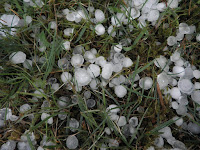If your tile roof is starting to have some leaks around your chimney, it may warrant looking up on the roof or have a professional roofing contractor look for you. Too often do homeowners want to blame it on poor installation. If you have an older home, that probably isn’t the case.
It could be that your tile roof simply needs to be cleaned. Or, perhaps the chimney flashing needs to be repaired or replaced. There is no way to know until it has been looked at.
What many roofing contractors find is that it is from rain, melted ice, or melted snow running over the channel flashing. Channel flashing is located under the side tiles. At the chimney’s corner, water will run off the chimney cricket almost at a horizontal direction to the side channel flashing and the vertical tiles.
As that water runs down, it collects debris such as leaves and trees and over time, it all builds up under the upper tiles, creating a dam next to the flashing that is raised up. The water will get pushed over the dammed flashing and find its way under the field tiles.
If the tar paper has any holes, the water will find its way there and cause the nails to start rusting, then rotting through the wood. The smallest of holes can start creating the biggest leaks in the roof decking. While it may be slow and unnoticed, the roof boards and the rafters begin to rot and the insulation starts soaking up water. Before you know it, it has made its way onto the ceiling and into your house.
You can fix it cheaply by smearing a tar substance product around the chimney and side tiles. Or, that can make the problem worse. Therefore, it is best to have a professional roofing contractor come look at your roof – most offer a free estimate.






















